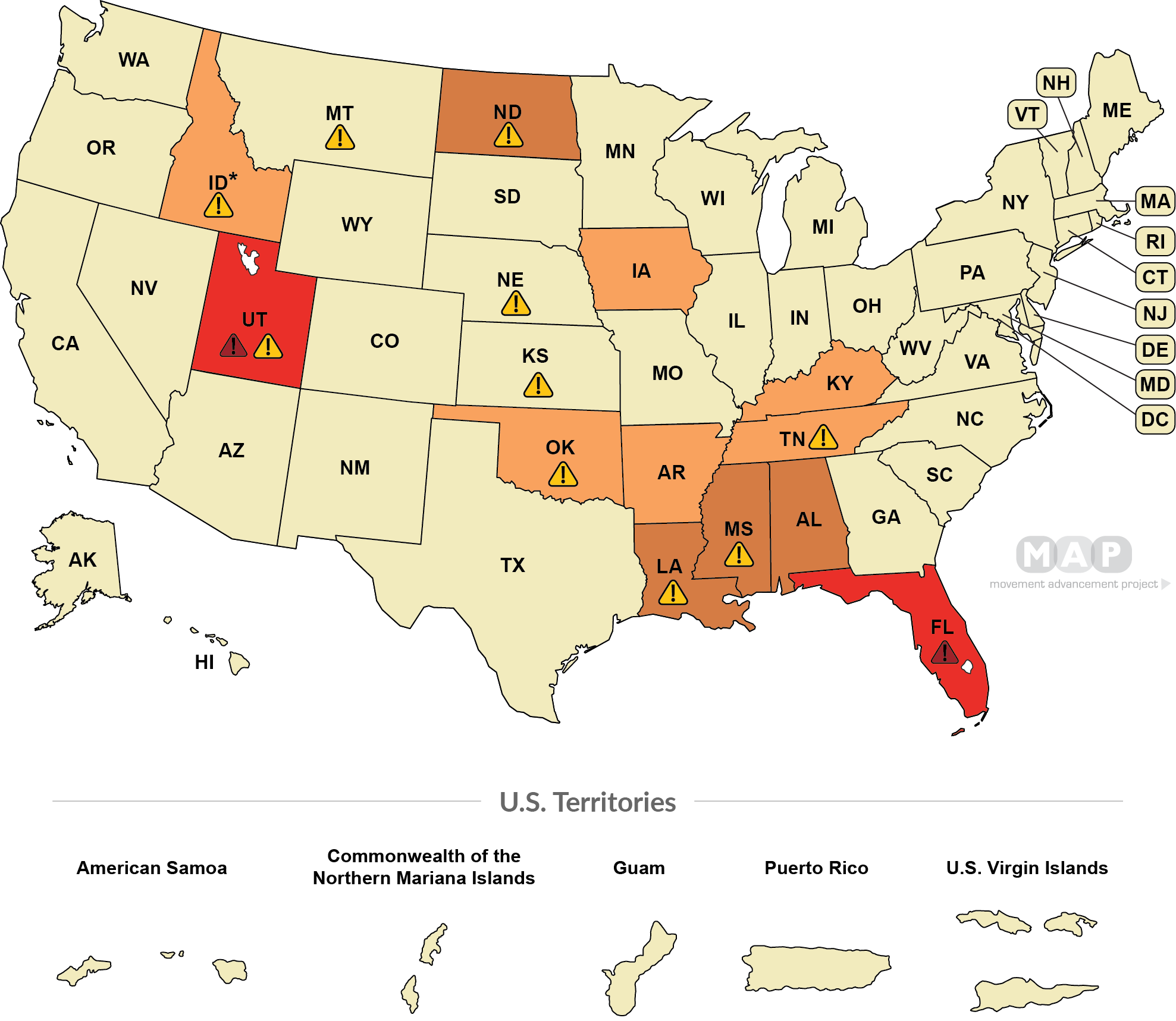| State |
K-12 |
Some But Not All Government-Owned Buildings/Places |
All Schools, Colleges, & Government-Owned Buildings |
Year passed |
| Alabama |
State does not have this law |
State does not have this law |
|
2022, 2024 |
| Alaska |
State does not have this law |
|
|
|
| American Samoa |
State does not have this law |
|
|
|
| Arizona |
State does not have this law |
|
|
|
| Arkansas |
State does not have this law |
|
|
2023 |
| California |
State does not have this law |
|
|
|
| Colorado |
State does not have this law |
|
|
|
| Connecticut |
State does not have this law |
|
|
|
| Delaware |
State does not have this law |
|
|
|
| District of Columbia |
State does not have this law |
|
|
|
| Florida |
State does not have this law |
|
State does not have this law |
2023 |
| Georgia |
State does not have this law |
|
|
|
| Guam |
State does not have this law |
|
|
|
| Hawaii |
State does not have this law |
|
|
|
| Idaho |
State does not have this law |
|
|
2023 |
| Illinois |
State does not have this law |
|
|
|
| Indiana |
State does not have this law |
|
|
|
| Iowa |
State does not have this law |
|
|
2023 |
| Kansas |
State does not have this law |
|
|
|
| Kentucky |
State does not have this law |
|
|
2023 |
| Louisiana |
State does not have this law |
State does not have this law |
|
2024 |
| Maine |
State does not have this law |
|
|
|
| Maryland |
State does not have this law |
|
|
|
| Massachusetts |
State does not have this law |
|
|
|
| Michigan |
State does not have this law |
|
|
|
| Minnesota |
State does not have this law |
|
|
|
| Mississippi |
State does not have this law |
State does not have this law |
|
2024 |
| Missouri |
State does not have this law |
|
|
|
| Montana |
State does not have this law |
|
State does not have this law |
2025 |
| Nebraska |
State does not have this law |
|
|
|
| Nevada |
State does not have this law |
|
|
|
| New Hampshire |
State does not have this law |
|
|
|
| New Jersey |
State does not have this law |
|
|
|
| New Mexico |
State does not have this law |
|
|
|
| New York |
State does not have this law |
|
|
|
| North Carolina |
State does not have this law |
|
|
|
| North Dakota |
State does not have this law |
State does not have this law |
|
2023 |
| Northern Mariana Islands |
State does not have this law |
|
|
|
| Ohio |
State does not have this law |
State does not have this law |
|
2024 |
| Oklahoma |
State does not have this law |
|
|
2022 |
| Oregon |
State does not have this law |
|
|
|
| Pennsylvania |
State does not have this law |
|
|
|
| Puerto Rico |
State does not have this law |
|
|
|
| Rhode Island |
State does not have this law |
|
|
|
| South Carolina |
State does not have this law |
|
|
2024 |
| South Dakota |
State does not have this law |
|
State does not have this law |
2025 |
| Tennessee |
State does not have this law |
|
|
2021 |
| Texas |
State does not have this law |
|
|
|
| U.S. Virgin Islands |
State does not have this law |
|
|
|
| Utah |
State does not have this law |
|
State does not have this law |
2024 |
| Vermont |
State does not have this law |
|
|
|
| Virginia |
State does not have this law |
|
|
2023 |
| Washington |
State does not have this law |
|
|
|
| West Virginia |
State does not have this law |
State does not have this law |
|
2025 |
| Wisconsin |
State does not have this law |
|
|
|
| Wyoming |
State does not have this law |
|
State does not have this law |
2025 |




